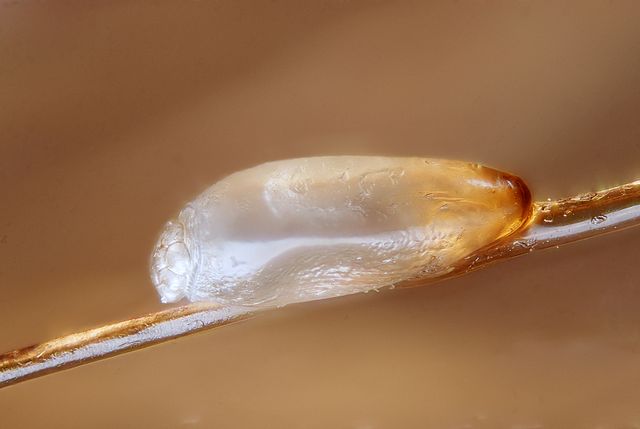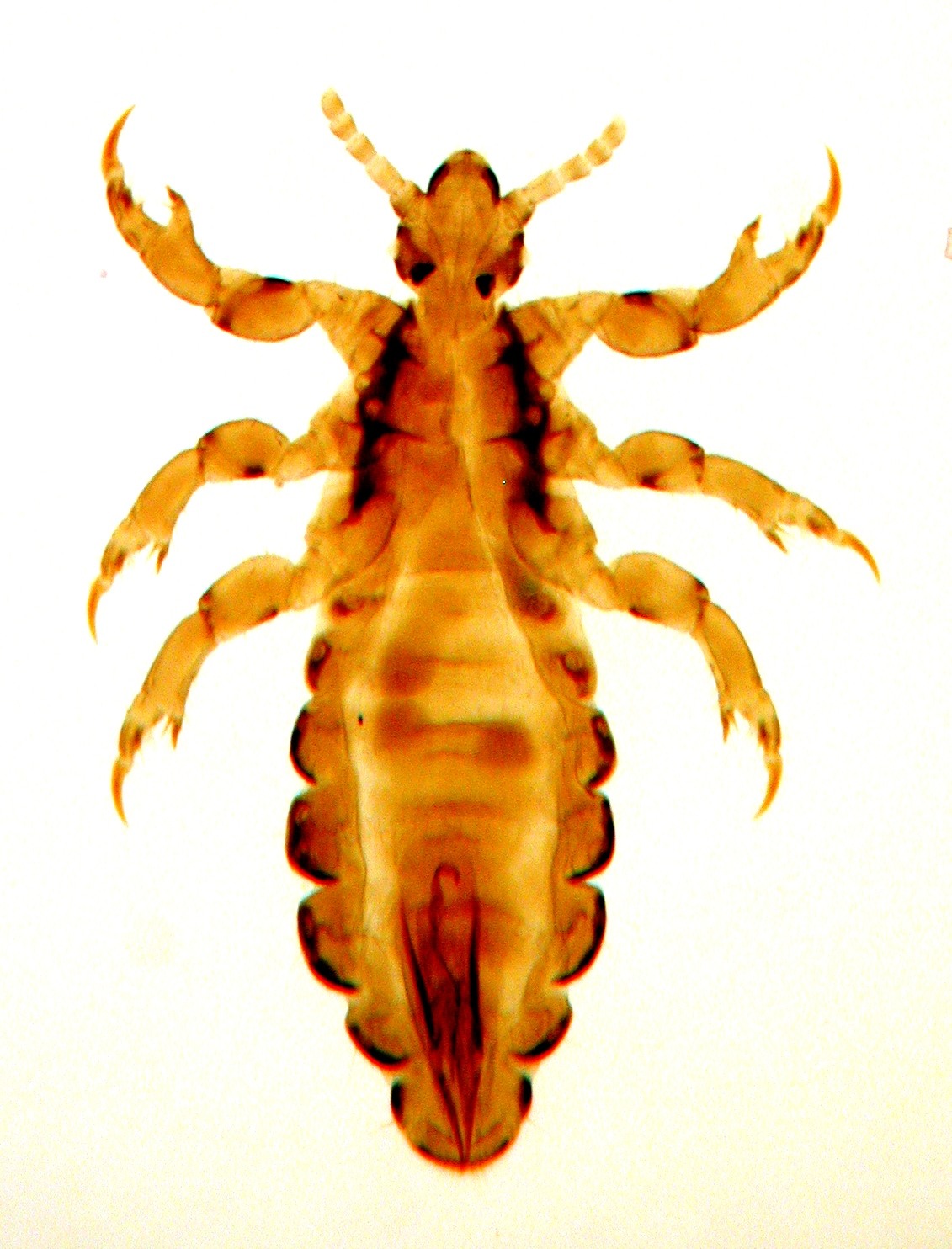As an Amazon Associate, I earn from qualifying purchases.
What Do Lice Look Like?
Lice—also referred to as head lice or nits—normally appear as white or gray–brown in color and it can be found attached to some parts of humans or animals. The immature head lice usually have the brownish gray or white color, while the adult lice may look brownish or brown-black in color.
![]()
 Head louse eggs are usually the size of a flake of dandruff and such eggs could be yellow or white and appear as oval in shape.
Head louse eggs are usually the size of a flake of dandruff and such eggs could be yellow or white and appear as oval in shape.
They are usually attached to the hair of humans and animals, especially the area closest to the scalp. The hair and scalp usually provide a warm temperature for the incubation of the lice egg.
Most nits are usually located close to the neckline or somewhere behind the ears or at the back of the head. They can be sometimes located in eyebrows or eyelashes but that is not common. The female louse is known to produce a sticky substance that ensures each egg is attached to the shaft of the hair and any egg that is located between ½ and ¼ distance from the scalp is an indication that it will hatch very soon, or they may simply be empty casings of the lice.
Once the lice have hatched, the immature nymph is whitish or grey-brown in color and it will develop 8 hook-like claws, as well as a body that is smaller than a pinhead. Most eggs laid by female lice will hatch within 6-9 days, while the nymph will become fully adult within 7 days after hatching.
 Louse life cycle. The adult head lice usually measure around 1/8th of an inch and live for just 30 days on the average if it has continuous access to human blood. Adult lice that have no blood meal will usually live for around 1-2 days.
Louse life cycle. The adult head lice usually measure around 1/8th of an inch and live for just 30 days on the average if it has continuous access to human blood. Adult lice that have no blood meal will usually live for around 1-2 days.
Most adult female lice are quite larger than male lice, and they can easily lay up to 8 eggs in different locations per day. Lice are usually darker when they are found in darker hair while those in blond hair will usually appear lighter in color.
Generally, head lice will feed on human blood and they also inject saliva into their host and they ensure they constantly feed on the blood of the host in order to prevent a blood clot from forming. This will eventually trigger itching, which is an allergic reaction.
When lice are not treated, there may be a secondary infection, whereby the scratching of the scalp becomes more intense and this may cause bruises and bleeding. Though the presence of lice can be very frustrating they are not dangerous and they do not transmit any disease.
Lice are usually transmitted from an individual to another through person-to-person contact and via the hair. It should be noted that common lice cannot fly, nor can they jump or swim; thus, the only way they can be transmitted is through head-to-head contact, especially via the hair. The infestation of head lice cannot be caused by greasy hair or poor hygiene; however, head lice can affect anyone regardless of hair length. Though head lice can only affect humans. However, certain species of lice may be found on some animals.
 Research has shown that head lice may survive under water for several hours and it can be extremely difficult to remove them or wash them unless the hair is completely shaved and treatments applied. Head lice are known to use their claw-like bodies to attach themselves firmly to the scalp of the hair when they are washed.
Research has shown that head lice may survive under water for several hours and it can be extremely difficult to remove them or wash them unless the hair is completely shaved and treatments applied. Head lice are known to use their claw-like bodies to attach themselves firmly to the scalp of the hair when they are washed.
Also, the addition of chlorine to swimming pools will not destroy head lice, no matter how concentrated such chlorine can be. When they spend much time in water, lice may gain more body weight as they swell up slightly.
Female lice are known to start laying new eggs some 9 days after their eggs have hatched and you may have to remove lice before they hatch in order to break their cycle and prevent them from spreading. Itching or “pruritus” is the most prominent symptom of a head louse infestation and this is mostly caused by the saliva released by lice during maturation. Not everyone will be allergic to head lice and, in many instances, the infestation can be asymptomatic.
 In some cases, people can become extremely sensitive to the bites from lice and start feeling extensive itching, while others have developed tolerance to itching caused by lice, even after repeated infections.
In some cases, people can become extremely sensitive to the bites from lice and start feeling extensive itching, while others have developed tolerance to itching caused by lice, even after repeated infections.
Some other symptoms of lice, aside from itching, include crawling or tickling sensation in the hair, irritability, and difficulty in sleeping, and sores that result on the scalp, especially as a result of continuous scratching of the hair and scalp.
Lice may be difficult to spot on humans even on close inspection and this confusion often lead to a misdiagnosis of lice. Even when lice have been eradicated, the eggs may remain attached to the scalp. For this reason, the observation of empty shells or un-hatched eggs is the first physical diagnosis that must be conducted. While head lice can be visible to the eye, you may need a magnifying lens in order to detect crawling lice.
 You may also need an aid in order to identify the presence of nymphs, in most cases. People often confuse the lice with dandruff; thus, making it difficult to eradicate them. Some people may also confuse eggs with dirt particles or hairspray droplets and don’t think they need head louse treatment.
You may also need an aid in order to identify the presence of nymphs, in most cases. People often confuse the lice with dandruff; thus, making it difficult to eradicate them. Some people may also confuse eggs with dirt particles or hairspray droplets and don’t think they need head louse treatment.
The standard for identifying lice infestation is to identify a louse in the head physically. However, this may be difficult because lice are known to hide from light and then crawl quickly out of site. In order to make it easier to identify lice, you must make use of a fine-toothed comb, though this type of comb works best with wet hair but it can also work well in identifying and removing lice on dry hair.
Amazon and the Amazon logo are trademarks of Amazon.com, Inc, or its affiliates.
